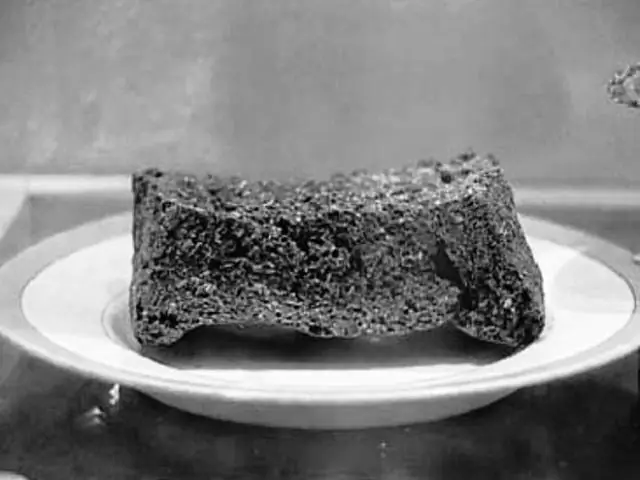- Author Brandon Turner [email protected].
- Public 2023-12-17 01:37.
- Last modified 2025-01-24 11:11.
Erzats bread does not have a permanent recipe, since it helped to survive during the war years in conditions of food shortages. It originally consisted of 55% rye flour, 25% wheat flour, and the rest was supplemented with potato powder. In the absence of these ingredients, they were replaced by other products left over from grinding or legumes.

Despite the fact that in Russia since time immemorial, such surrogate bread is denoted by a completely non-Russian prefix "ersatz" in Russia as well, adding to the full-value cereal flour of the waste accompanying its production, as well as quinoa, reeds, acorns and needles.
From the field of linguistics
Der Ersatz is certainly not a prefix, but a full-fledged German word that translates as "replacement, compensation" or in military terminology - "replenishment". Over time, it began to be used in the sense of a substitute for something. However, it is not entirely correct to believe that the concept of ersatz bread appeared precisely in the hungry years of World War I in Germany. Then the Germans called bread Kriegsbrot. It was quite edible and consisted of 80% rye-wheat mixture, with a predominance of rye flour. To it was added 20% of potato powder, sugar and fat were present in the composition.
It must be admitted that it was the Germans who established the industrial production of defective products with the help of substitutes. Thanks to worthy developments in the field of chemistry, in addition to food, synthetic rubber and benzene appeared during the First World War as a substitute for fuel oil.
Now it is difficult to reconstruct a reliable date when substitutes came into life under the name "ersatz", but this term today is not just a substitute for something, namely, defective analogs. Not only ersatz bread is known, but also ersatz sausage, ersatz leather, ersatz wool, weapons and fuel.
Erzats today
It is not surprising that Germany became the birthplace of substitutes, because back in 1856 the famous chemist Justus von Liebig invented a "meat" extract, which did not even "smell" of meat. Modern science is convinced that this was the beginning of bouillon cubes, which were later enriched with such a harmful additive as monosodium glutamate.
It must be said that ersatz is a temporary phenomenon, allowing one to survive the hardships of war and economic crises. A natural product cannot be replaced forever, otherwise it will affect the health and longevity of the nation.
Ersatz-bread of the past, although it was an inferior substitute, but it contained harmless components. Potato flour allowed it to last longer. Even if rye and wheat were not available, they were replaced by oats, maize, barley, buckwheat, or legumes. Erzats sausage contained a lot of pea flour, which has a high nutritional value.
Today, surrogates have ceased to be "white and fluffy", because various synthetic additives, dyes, preservatives, emulsifiers are used to increase the shelf life. And now the food no longer deteriorates, does not dry out, does not grow moldy. Chips, crackers and other fast food significantly saves the time of a modern person, but takes away precious years of life.






